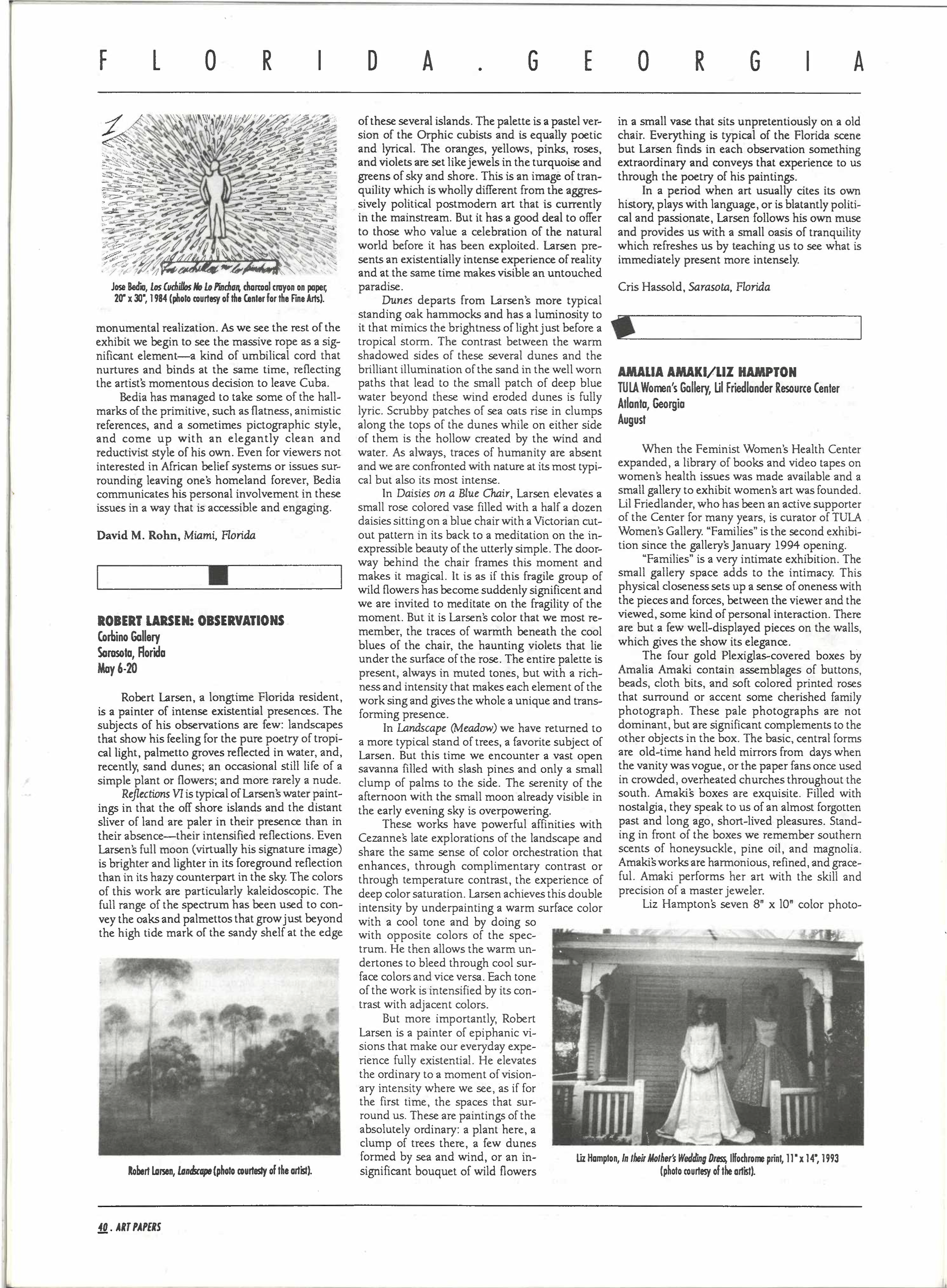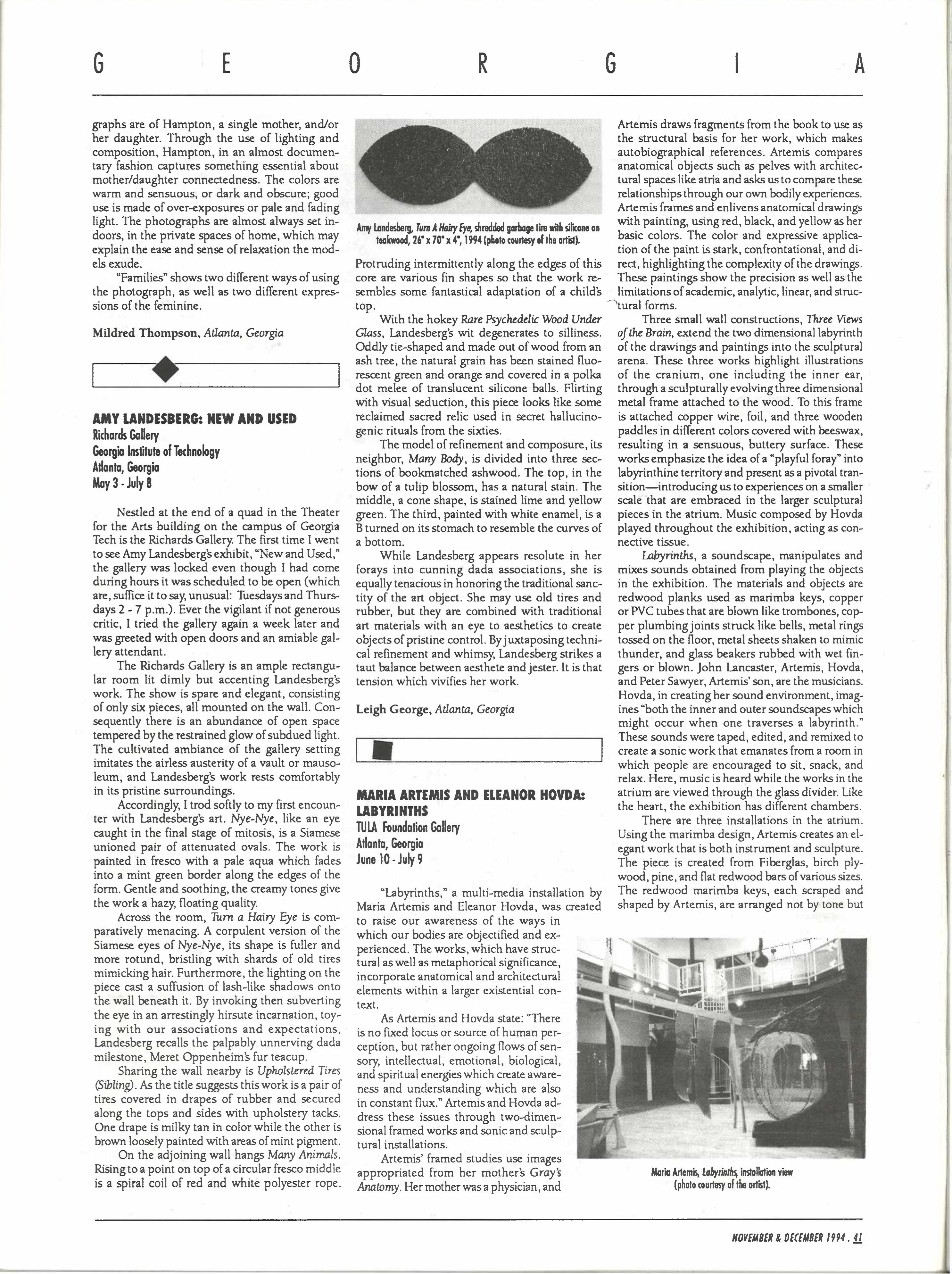Amalia Amaki/Liz Hampton
Share:
When the Feminist Women’s Health Center expanded, a library of books and video tapes on women’s health issues was made available and a small gallery to exhibit women’s art was founded. Lil Friedlander, who has been an active supporter of the Center for many years, is curator of TULA Women’s Gallery. “Families” is the second exhibition since the gallery’s January 1994 opening.
“Families” is a very intimate exhibition. The small gallery space adds to the intimacy. This physical closeness sets up a sense of oneness with the pieces and forces, between the viewer and the viewed, some kind of personal interaction. There are but a few well-displayed pieces on the walls, which gives the show its elegance.
The four gold Plexiglas-covered boxes by Amalia Amaki contain assemblages of buttons, beads, cloth bits, and soft colored printed roses that surround or accent some cherished family photograph. These pale photographs are not dominant, but are significant complements to the other objects in the box. The basic, central forms are old-time hand held mirrors from days when the vanity was vogue, or the paper fans once used in crowded, overheated churches throughout the south. Amaki’s boxes are exquisite. Filled with nostalgia, they speak to us of an almost forgotten past and long ago, short-lived pleasures. Standing in front of the boxes we remember southern scents of honeysuckle, pine oil, and magnolia. Amaki’s works are harmonious, refined, and graceful. Amaki performs her art with the skill and precision of a master jeweler.
Liz Hampton’s seven 8” x 10” color photographs are of Hampton, a single mother, and/or her daughter. Through the use of lighting and composition, Hampton, in an almost documentary fashion captures something essential about mother/daughter connectedness. The colors are warm and sensuous, or dark and obscure; good use is made of over-exposures or pale and fading light. The photographs are almost always set indoors, in the private spaces of home, which may explain the ease and sense of relaxation the models exude.
“Families” shows two different ways of using the photograph, as well as two different expressions of the feminine.

